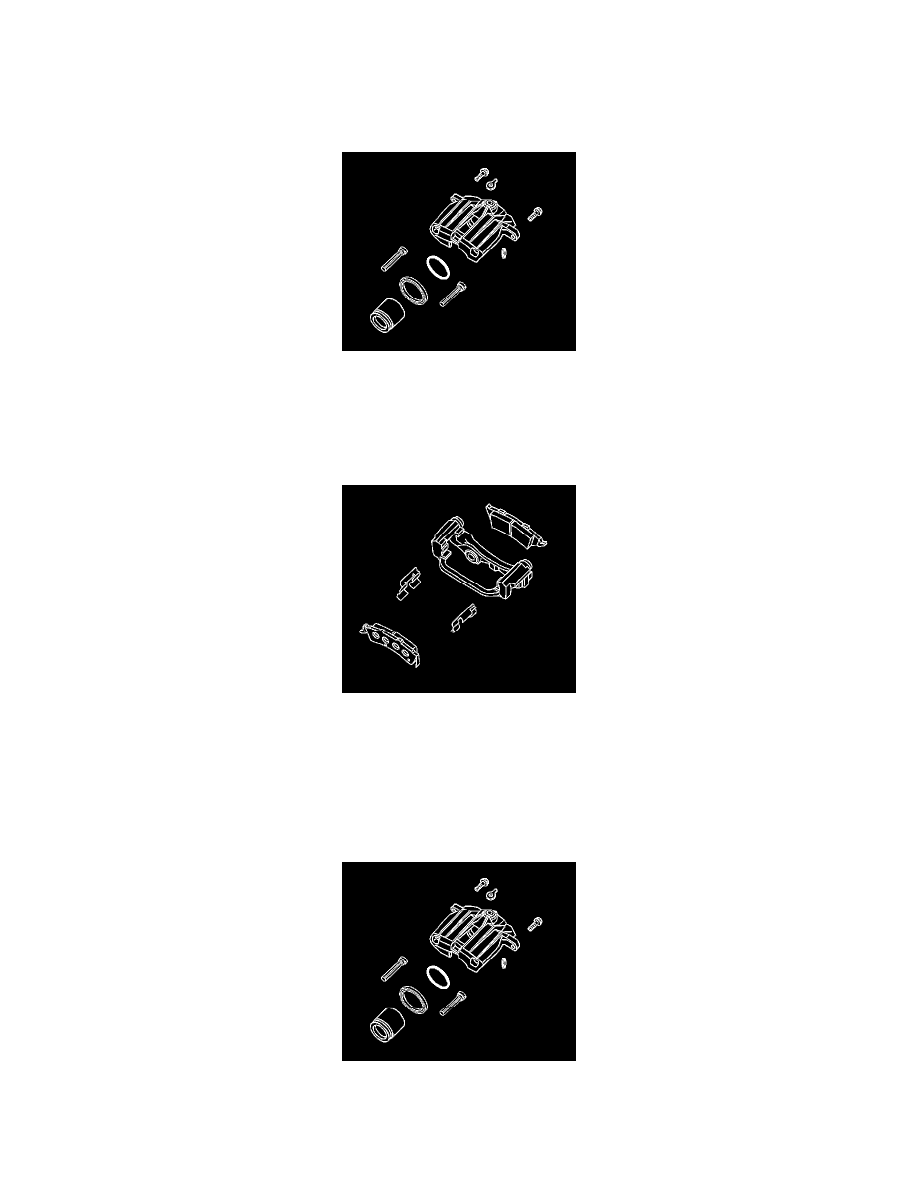Savana 3500 V8-4.8L (2009)

Do not place fingers in front of the caliper piston(s) in an attempt to catch or protect it when applying compressed air. The piston(s) can fly out with
force and could result in serious bodily injury.
2. Place a thin piece wood in front of the piston in order to prevent damage. Remove the piston by directing compressed air into the brake hose inlet
fitting port of the brake caliper housing.
3. Remove the piston boot.
4. Remove the piston seal.
5. Remove the brake caliper bleed screw cap.
6. Remove the brake caliper bleed screw.
7. Inspect the brake caliper bore and the piston seal groove for scoring and corrosion. If you find excessive scoring or corrosion around the piston
seal area, replace the brake caliper housing.
8. Inspect the brake caliper mounting bracket guide surfaces for corrosion and wear. Remove and replace the brake caliper mounting bracket if
needed.
9. Clean all of the residue from the brake pad guiding surfaces on the brake caliper housing and the brake caliper mounting bracket.
10. Clean all of the parts not included in the repair kit with denatured alcohol.
11. Dry all the parts with non lubricated filtered compressed air.
12. Blow out all passages in the brake caliper housing and the brake caliper bleeder valve.
Assembly Procedure
Caution: Refer to Fastener Caution (See: Service Precautions/Vehicle Damage Warnings/Fastener Caution).
1. Install the brake caliper bleed screw and tighten to 12 Nm (106 lb in).
2. Install the brake caliper bleed screw cap.
